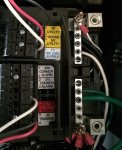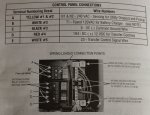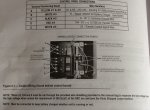This is my first time wiring a automated generator and I have a question. Hopefully someone out there has experience wiring these and this will be a simple question.
I purchased a Generac transfer switch that came with its own load center. Instead of getting the matching Generac generator my customer went to Costco and purchased a Honeywell generator. I was told that sometimes two different brands will have a difficult time communicating with each other but I was told the Honeywell generator is basically a Generac with a different name painted on it. When I looked at what generator models my transfer switch would work with, the Honeywell model number came up so I assumed I was good to go. Anyway long story short, The generator is not set in its permanent place but it was on site so I decided to rig it up and make sure everything was in working order before the sheetrock goes on (this is a single famliy dwelling by the way). When I originally wired the house I had not seen the generator yet so I pulled what I thought was correct. I pulled a 14-2 NM-B for the "sensing breaker" and a 14-3 NM-B for the transfer switch. When I went to hook it up I see there is another spot to land a wire that says it is for the battery charger. So now I figured that it needed a neutral wire so I tore out the 14-2 I ran for the sensing breaker and replaced it with a 14-3. I hooked it up and the generator readout claimed there was no power to the battery charger. Did I do something wrong?
Basically what should I be hooking up to the terminal B (white #3)?
I purchased a Generac transfer switch that came with its own load center. Instead of getting the matching Generac generator my customer went to Costco and purchased a Honeywell generator. I was told that sometimes two different brands will have a difficult time communicating with each other but I was told the Honeywell generator is basically a Generac with a different name painted on it. When I looked at what generator models my transfer switch would work with, the Honeywell model number came up so I assumed I was good to go. Anyway long story short, The generator is not set in its permanent place but it was on site so I decided to rig it up and make sure everything was in working order before the sheetrock goes on (this is a single famliy dwelling by the way). When I originally wired the house I had not seen the generator yet so I pulled what I thought was correct. I pulled a 14-2 NM-B for the "sensing breaker" and a 14-3 NM-B for the transfer switch. When I went to hook it up I see there is another spot to land a wire that says it is for the battery charger. So now I figured that it needed a neutral wire so I tore out the 14-2 I ran for the sensing breaker and replaced it with a 14-3. I hooked it up and the generator readout claimed there was no power to the battery charger. Did I do something wrong?
Basically what should I be hooking up to the terminal B (white #3)?




